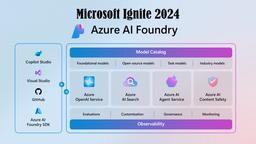Introduction to Typecast
Typecast is an innovative AI-powered voice generation platform designed to streamline content creation by producing high-quality, emotionally expressive voiceovers. Utilizing advanced machine learning and deep learning technologies, Typecast allows users to convert text into lifelike speech, offering a library of over 300 unique AI voices, each capable of conveying various emotions such as joy, sadness, and excitement.
The platform's user-friendly interface makes it accessible to content creators, educators, marketers, and businesses alike. With features like character casting, multilingual dubbing, and voice cloning, Typecast enables users to create customized audio content quickly and efficiently, eliminating the need for professional recording studios.
Typecast's ability to integrate AI avatars further enhances video content creation, making it a versatile tool for various applications, from educational videos to marketing campaigns. Overall, Typecast is revolutionizing the way creators approach audio and video production, offering a cost-effective and efficient solution to meet the growing demand for engaging, high-quality content.

Use Cases of Typecast
Typecast is a versatile AI voice generation platform that caters to a range of applications across various industries. Here are some of the key use cases:
- Audiobook Narration: Typecast's advanced text-to-speech capabilities allow authors and publishers to create high-quality audiobooks with lifelike narration. With over 190 voices and customizable emotional tones, creators can choose a voice that fits their story, enhancing the listening experience and attracting a broader audience.
- Video Content Creation: Content creators can seamlessly integrate Typecast's AI-generated voiceovers into their videos. This tool simplifies the video editing process, allowing users to produce engaging content for platforms like YouTube and TikTok. With options to customize speed and emotion, videos can resonate more with viewers, increasing viewer retention and engagement.
- Game Development: Game developers can use Typecast to add unique character voices to their projects. By leveraging the platform's diverse voice options, developers can create immersive audio experiences that bring characters to life, enhancing storytelling and gameplay.
- Marketing and Advertising: Businesses can utilize Typecast to create compelling voiceovers for promotional materials, advertisements, and presentations. The AI's ability to convey different emotions helps brands communicate their messages effectively, fostering a connection with their target audience.
- Accessibility: Typecast enhances accessibility by providing voiceovers for educational materials, websites, and applications. This ensures that content is available to a wider audience, including those who may have visual impairments or reading difficulties, promoting inclusivity.
- E-Learning: Educators can create engaging e-learning content with Typecast's realistic voiceovers. The platform allows for personalized learning experiences by enabling instructors to add narration to lessons, making the material more accessible and enjoyable for students.
These use cases demonstrate how Typecast can transform various industries by providing innovative solutions through AI-driven voice generation.
How to Access Typecast
Accessing Typecast is simple and straightforward. Follow these steps to get started with this powerful AI voice generator and content creation tool:
- Visit the Typecast Website: Go to https://typecast.ai in your web browser.
- Sign Up for an Account: Click on "Sign Up" or "Try For Free" and create an account with your email address and password.
- Choose a Subscription Plan: Review available options and select a plan that fits your needs.
- Log In to Your Account: Return to the homepage and click "Log In" to access your dashboard.
- Explore Features and Start Creating: Familiarize yourself with the tools and begin generating voiceovers or customizing AI voices.
How to Use Typecast
- Sign Up: Create an account on the Typecast website.
- Choose Your Project: Select the type of project you want to create (text-to-speech, voice cloning, or video voiceovers).
- Access the Text-to-Speech Editor: Navigate to the TTS editor to input and format your text.
- Select AI Voices: Browse through the library of over 190 AI voices and choose the ones that fit your project.
- Assign Voices to Text: In the editor, assign different voices to specific sections or characters.
- Preview and Adjust: Listen to your audio and adjust parameters like emotion, speed, and pauses.
- Export Your Audio: Once satisfied, export the audio as an MP3 file for use in your content.
How to Create an Account on Typecast
- Visit the Registration Page: Go to https://app.typecast.ai/en/register.
- Fill Out the Registration Form: Enter your email address and create a password.
- Accept Terms and Conditions: Read and agree to Typecast's terms and privacy policy.
- Click on "Create Account": Submit your registration.
- Verify Your Email: Check your inbox for a verification email and click the provided link.
- Log In to Your Account: Return to the login page and enter your credentials to access your new account.
Tips for Using Typecast Effectively
- Explore Voice Options: Experiment with different accents, tones, and styles from Typecast's extensive library.
- Utilize the Emotion Slider: Adjust emotional intensity to make voiceovers more engaging and relatable.
- Script Preparation: Prepare well-structured scripts with natural pauses and pacing for fluid audio.
- Preview and Adjust: Always preview and fine-tune your audio before finalizing.
- Leverage Voice Cloning: Use the voice cloning feature to create custom voices that reflect your unique style.
By following these guidelines and tips, you can harness the full potential of Typecast to create compelling, high-quality audio content that resonates with your audience and elevates your projects to new heights.




